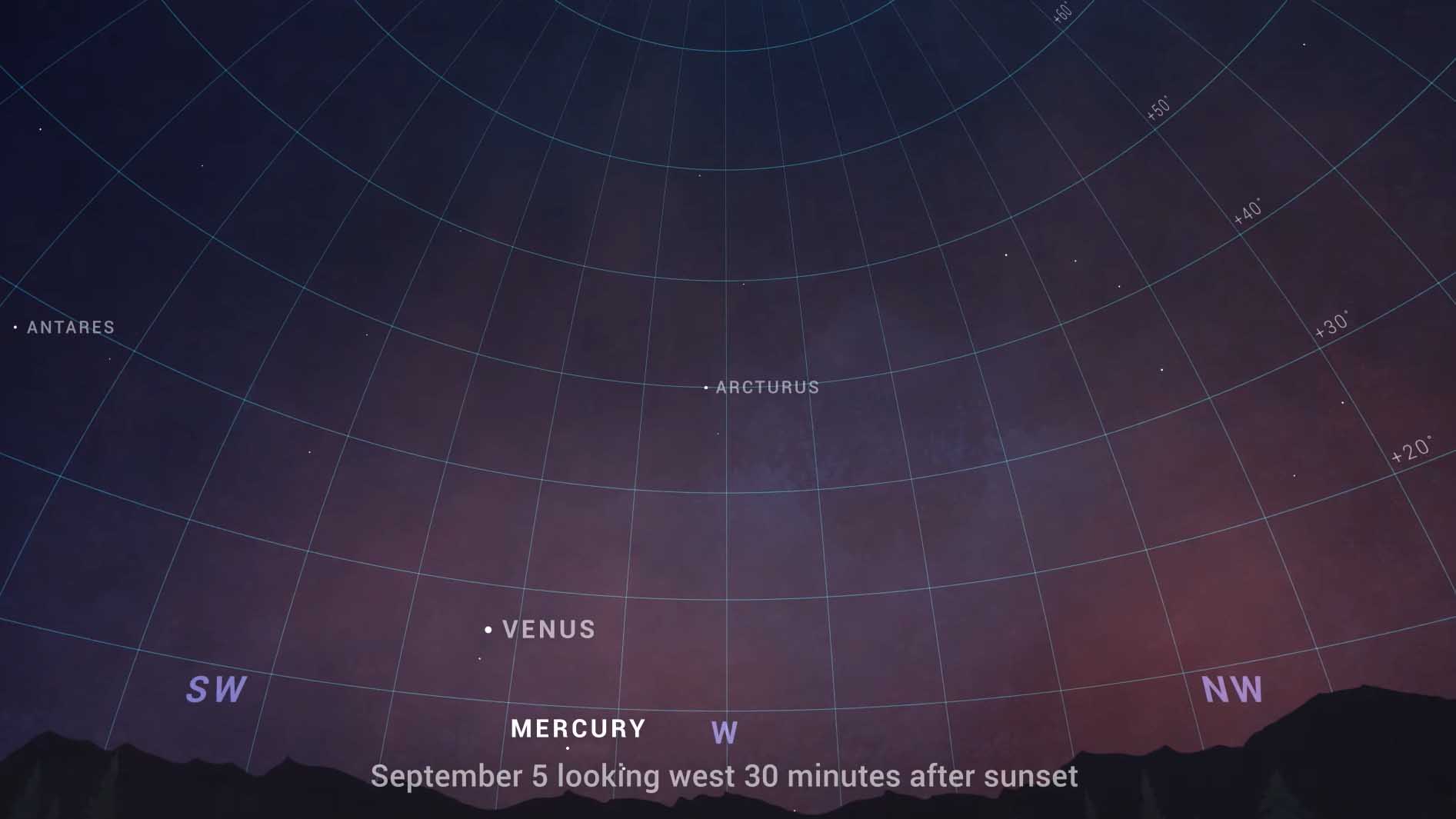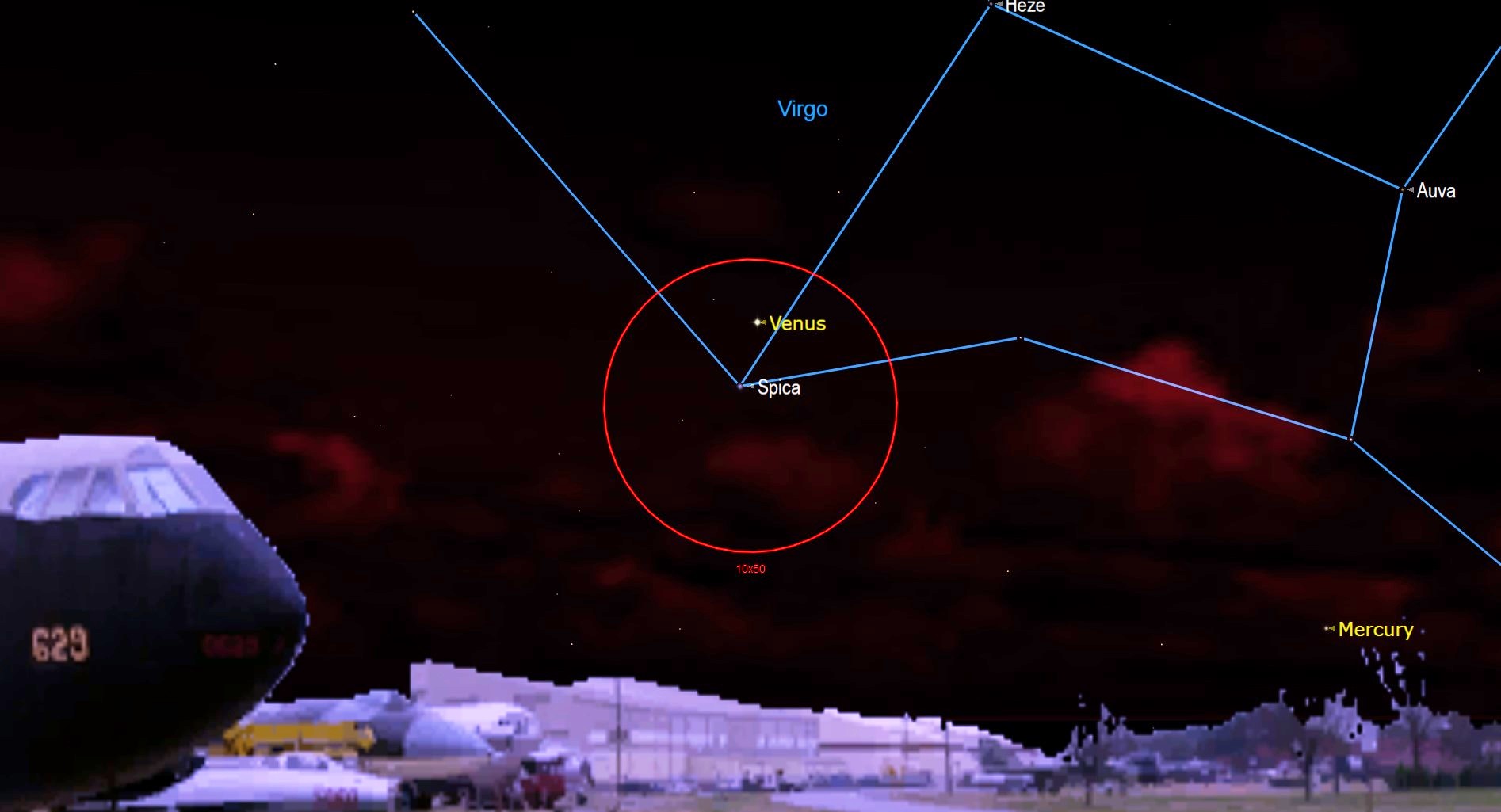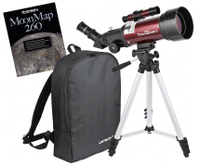How to see Venus shine with bright star Spica tonight and maybe spot Mercury, too
If you look up in the evening sky just after sunset tonight (Sept. 5), you might see a trio of brilliant lights low on the western horizon and they're not all stars. The planets Venus and Mercury will be visible along with the bright star Spica, weather permitting.
You'll need a clear western horizon to spot Venus, Spica and Mercury tonight as the trio will be visible extremely low in the western sky, particularly Mercury, which can be hard to spot in the fading twilight before it slips below the horizon. Venus and Spica — the brightest star (actually it's a binary system) in the Virgo constellation — will appear extremely close, but you may have to wait a bit to see Spica join the view.
Related: The best telescopes of 2021: Top picks to see planets
More: Best night sky events of September 2021 (stargazing maps)

Orion GoScope II 70 Telescope Moon Kit: $89.99 at Amazon
If you know a youngster who can't get enough of the moon, then they'll be delighted with views through the Orion GoScope II. Revealing craters and seas up close, this little telescope comes with a carry case and moon map.
"At closest approach on Sunday evening Venus will shine only a thumb's width above (or 1.5 degrees to the celestial north of) Spica, allowing them to appear together in binoculars and low power telescopes (red circle)," amateur astronomer Chris Vaughan with the mobile skywatching app SkySafari wrote in our September 2021 night sky guide.
"Venus will pop into view first after sunset — but you'll need to let the sky darken more to see 100 times fainter Spica with your unaided eyes. Start looking at about 8 p.m. local time." Be careful to wait until the sun has fully set before use a telescope or binoculars, he added.

While Mercury will be visible to the lower right of Venus, tonight's view is just a preview of sightings of the planets and the moon this month. The moon's phase is will reach its new moon stage on Monday night (Sept. 6), but will soon illuminate into a crescent later this week.
On Wednesday, Sept. 8, Mercury will appear near the moon in a conjunction that will mostly be visible from the Southern Hemisphere and lower latitudes in the Northern Hemisphere as it occurs at 4:18 p.m. EDT (2018 GMT) when the sun is still up.
Get the Space.com Newsletter
Breaking space news, the latest updates on rocket launches, skywatching events and more!
Then on Friday, Sept. 10, the moon will pass Venus, offering a potentially dazzling view as they should be visible near each other in the southwestern sky.
Editor's Note: If you snap an amazing night sky picture and would like to share it with Space.com's readers, send your photos, comments, and your name and location to spacephotos@space.com.
Email Tariq Malik at tmalik@space.com or follow him @tariqjmalik. Follow us @Spacedotcom, Facebook and Instagram.
Join our Space Forums to keep talking space on the latest missions, night sky and more! And if you have a news tip, correction or comment, let us know at: community@space.com.

Tariq is the Editor-in-Chief of Space.com and joined the team in 2001, first as an intern and staff writer, and later as an editor. He covers human spaceflight, exploration and space science, as well as skywatching and entertainment. He became Space.com's Managing Editor in 2009 and Editor-in-Chief in 2019. Before joining Space.com, Tariq was a staff reporter for The Los Angeles Times covering education and city beats in La Habra, Fullerton and Huntington Beach. In October 2022, Tariq received the Harry Kolcum Award for excellence in space reporting from the National Space Club Florida Committee. He is also an Eagle Scout (yes, he has the Space Exploration merit badge) and went to Space Camp four times as a kid and a fifth time as an adult. He has journalism degrees from the University of Southern California and New York University. You can find Tariq at Space.com and as the co-host to the This Week In Space podcast with space historian Rod Pyle on the TWiT network. To see his latest project, you can follow Tariq on Twitter @tariqjmalik.











